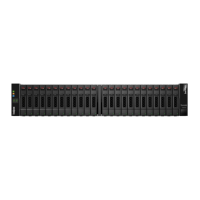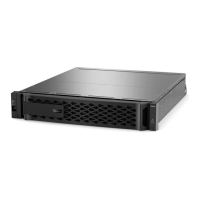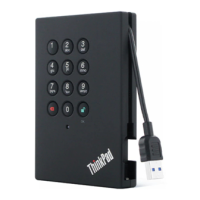Obtaining IP values 81
Setting network port IP addresses using the CLI port and cable
If you did not use DHCP to set network port IP values, set them manually as described below.
• You can use the generic mini-USB cable and the USB CLI port. If you plan on using a mini-USB cable, you
will need to enable the port for communication using DB9 serial cable. See also “Using the CLI port and
cable—known issues on Windows” (page 155).
Network ports on controller module A and controller module B are configured with the following default values:
• Network port IP address: 10.0.0.2 (controller A), 10.0.0.3 (controller B)
• IP subnet mask: 255.255.255.0
• Gateway IP address: 10.0.0.1
If the default IP addresses are not compatible with your network, you must set an IP address for each network port
using the CLI embedded in each controller module. The CLI enables you to access the system using the USB
(Universal Serial Bus) communication interface and terminal emulation software.
NOTE:
• If you are using the mini-USB CLI port and cable, see Appendix C - USB device connection.
• Unless using Windows 10 or Server 2016, Windows customers should download and install the device driver as
described in “Obtaining the software download” (page 154).
• Linux customers should prepare the USB port as described in “Setting parameters for the device driver”
(page 155).
Use the CLI commands described in the steps below to set the IP address for the network port on each controller
module.
Once new IP addresses are set, you can change them as needed using the SMC. Be sure to change the IP address
before changing the network configuration. See “Accessing the SMC” (page 94) for more information concerning
the web-based storage management application.
1. From your network administrator, obtain an IP address, subnet mask, and gateway address for controller A and
another for controller B.
2. Record these IP addresses so you can specify them whenever you manage the controllers using the SMC or the
CLI.
–or–
3. Use the provided USB cable to connect controller A to a USB port on a host computer. The USB mini 5 male
connector plugs into the CLI port as shown in Figure 68 (generic controller module is shown).

